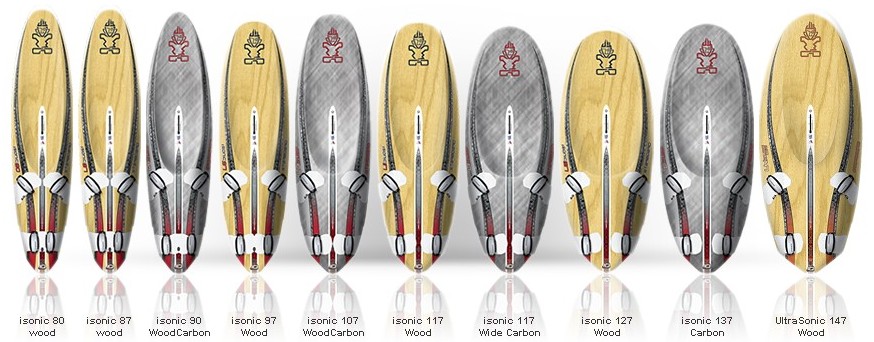"A deep deck concave offers three benefits. Firstly, by lowering the mast base, the moment created by the side-ways force of the mast base is reduced as the distance from the load to the point of pivot is smaller. It's easier to imagine the opposite. Consider a very, very thick board: the sideways force from the mast base will roll the board over more easily. This is desirable in raceboards like the Phantom Race and the Serenity, but slalom boards like to have as much control as possible. Secondly, the centre of gravity is lower. Any millimeter lower contributes to improved control and the rider will enjoy a more responsive board. Like the first benefit, it's a matter of moments and leverage as the ratio between the rider's controlling leverage over the board and the board's leverage on the rider becomes greater. Thirdly, the deep deck concave helps to break down the flow of air over the deck surface. Like a plane wing, the upper surface sucks the board upwards. With reduced suction effect, the board remains under control more easily."

"The harder rail edges help to release the water more cleanly. Again, it's easier to imagine the opposite: with round rails and without edges, the water likes to stick to the rails and will require more energy to release from the board. This energy is wasted."

"The harder rail edges can be achieved by removing material (thus keeping the wetted-surface area's width the same), or by adding material (thus increasing the wetted-surface area's width). There's quite a complex relationship between the wetted-surface area's aspect ratio and the range of use of a board. We have some extensive empirical data from years of testing the principle. It's extremely difficult to devise a mathematical model to predict the best aspect ratio for a given board, so we many of our prototypes are built to find the optimum ratio for each iSonic. In general, the wider the wetted-surface area can be, the shorter it will become to create an equal amount of lift. Like slalom fins, a high-aspect ratio is desirable as it's ultimately more efficient."




![aiba [aiba] [aiba]](/foro/smilies/aiba.gif)



![goofy [goofy] [goofy]](/foro/smilies/goofy.gif)

![big-laugh [big-laugh] [big-laugh]](/foro/smilies/big-laugh.gif)
![bonk [bonk] [bonk]](/foro/smilies/bonk.gif)